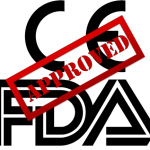The “regulatory affairs” section comprises over 200 tasks that need to be completed during the development and approval of medical devices.
Here, you will find an overview of the most essential content so that you can get your device approved quickly.
Content
On this page, you will find articles on the following topics:
- What regulatory affairs is
- Regulatory requirements
- Authorization and documentation
- Authorities, institutions, and associations
- Further topics of regulatory affairs
1. What regulatory affairs is
Regulatory affairs comprises the processes and activities that ensure that medical devices meet the regulatory requirements of the countries where they are sold. This includes
- obtaining the necessary approvals from the regulatory authorities,
- compliance with applicable regulations and standards, and
- maintaining conformity throughout the entire product life cycle until decommissioning.
The tasks of regulatory affairs also include monitoring changes to regulations and standards and communicating these changes to stakeholders within the company to ensure continuous compliance.
Regulatory affairs thus plays a crucial role in ensuring that medical devices are safe, effective, and comply with legal requirements.
Further information
Refer also to the article on regulatory affairs managers’ tasks, competencies, and earning potential. This includes the task of developing a regulatory strategy.
2. Regulatory requirements
a) Germany
| Laws |
Medical Devices Law (no longer valid)
Medical Devices Implementation Act MPDG |
| National regulations |
Medical Device Operator Ordinance (Medizinprodukte-Betreiberverordnung – MPBetreibV)
Medical Device User Notification and Information Ordinance (Medizinprodukte-Anwendermelde- und Informationsverordnung – MPAMIV) |
b) Europe
c) USA
d) Other markets
3. Approval and documentation
a) Approval
Find more information on international approval
b) Qualification and classification (How should my device be classified?)
c) Technical documentation (What do I need to document for each device?)
d) Quality management (What should your company fulfill?)
Quality management is not usually the responsibility of regulatory affairs. Nevertheless, we have listed some important articles for you.
e) Regulatory Roles
There are several expert articles on regulatory roles:
4. Authorities, institutions, and associations
a) Germany
b) Europe
c) International
| IMDRF: International Medical Device Regulators Forum |
5. Regulatory affairs: Further topics
The tasks of Regulatory Affairs also include finding and eliminating deviations and non-conformities. The (emergency) elimination is called remediation.
Note the advantages and disadvantages of Regulatory Information Management Systems (RIMS) and their role in manufacturers’ digital transformation.
Part of the tasks of regulatory affairs is regulatory intelligence.
Do you need support?
Do you still have questions, for example, about the approval of your devices? Then, take advantage of our free micro-consulting service.
If you would like support in developing and “approving” your medical devices in compliance with the law, contact us right away. The Johner Institute team will be happy to help!
GLP (Good Laboratory Practice) defines requirements for a quality assurance system for non-clinical health and environmental safety tests. It also describes the organizational procedure and conditions under which laboratory tests are planned, carried out, and monitored. GLP also covers the record and reporting of. In this article, you can read which requirements medical device manufacturers…
Details
Companion Diagnostics (also known as CDx) are used together with a medicinal product. Physicians use them, for example, to make sure that a particular medicinal product is actually suitable for a patient. This means that CDx play a particularly important role in personalized medicine. As the Companion Diagnostic and the medicinal product are inseparably linked,…
Details
Understandably, laws and standards also require IT security for legacy devices. However, the way in which these requirements are formulated often leads to confusion. For example, legislators and standard committees have been unable to agree on common definitions. One definition refers to the IT security of legacy devices, another to the IT security of old…
Details
Legislators are continually changing the regulatory framework for medical devices, as we have seen in Europe with EU Regulation 2017/745 (MDR) and EU Regulation 2017/746 (IVDR). This then raises the question of how to deal with legacy devices. These are the medical devices that manufacturers have legally placed on the market under the old directives…
Details
The EU regulations place high requirements on the so-called placing on the market of medical devices. Find out in this article what these regulations mean by placing on the market, what misunderstandings and contradictions you must be aware of, and what requirements manufacturers and devices must meet.
Details
Defining the regulatory strategy is one of the central tasks of the regulatory affairs departments at medical device manufacturers. Why is a good regulatory strategy so important? What do regulatory affairs experts need to do? This article provides the answers.
Details
MDCG published guideline MDCG 2023-4 in October 2023 entitled “Medical Device Software (MDSW) – Hardware combinations – Guidance on MDSW intended to work in combination with hardware or hardware components.”
How to meet PMCF regulatory requirements as quickly as possible Post-Market Clinical Follow-up is increasingly being criticized by the notified bodies. And this is after the manufacturers have successfully mastered the hurdle before: the initial clinical evaluation. This article provides manufacturers of medical devices with
Details
The term “predicate device” most often comes up in the context of FDA 510(k) clearances. However, the FDA does not define this term. It does, however, define what “substantial equivalence” is. Sounds complicated? Demonstrating equivalence is by no means only relevant in the FDA context. That’s why this article provides clarity – especially but not…
Details
510(k) clearance is the primary procedure for obtaining marketing clearance in the United States. It is also referred to as Premarket Notification (PMN). This article provides a quick overview of the procedure and the documents that must be submitted.
Details
